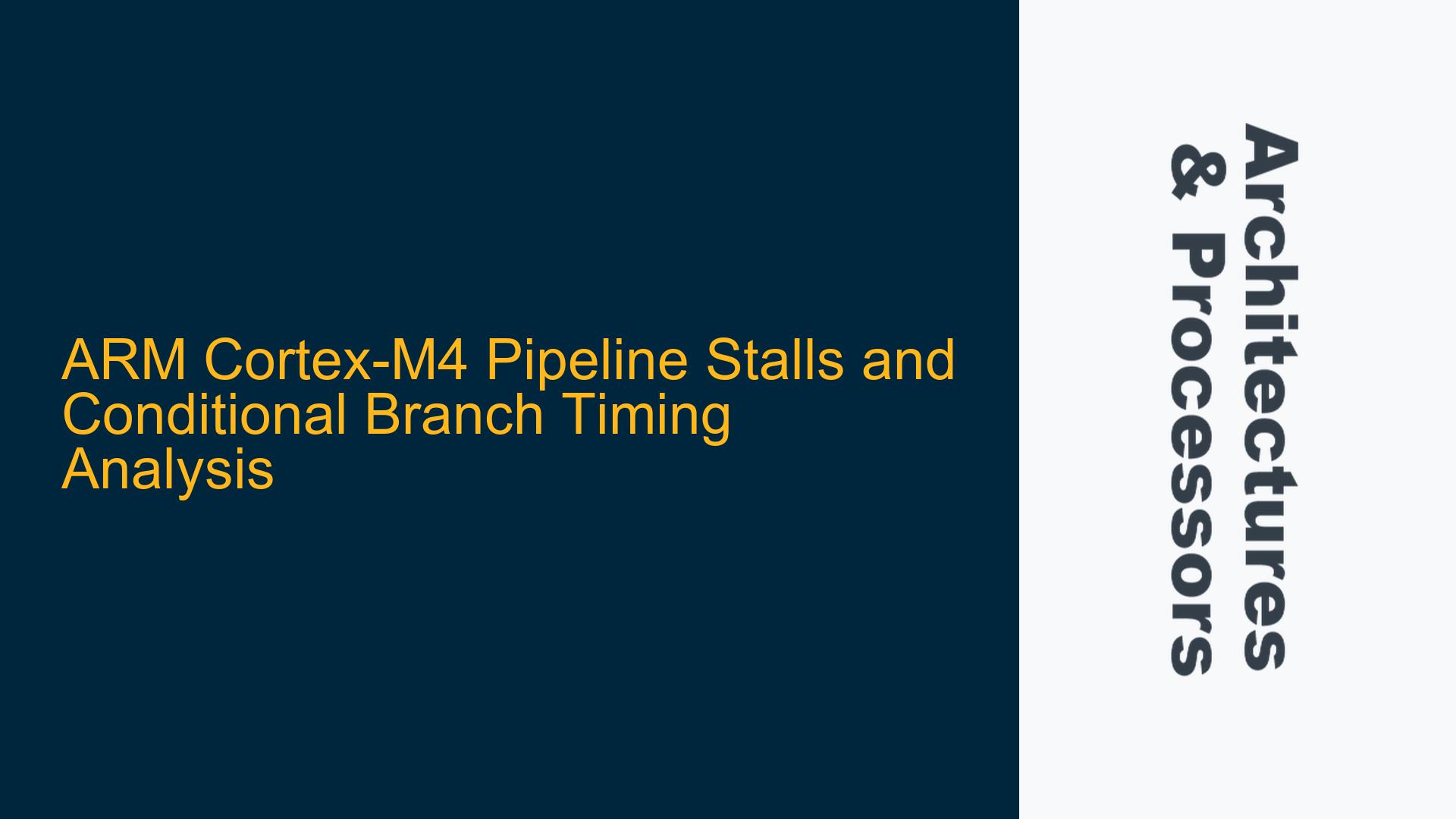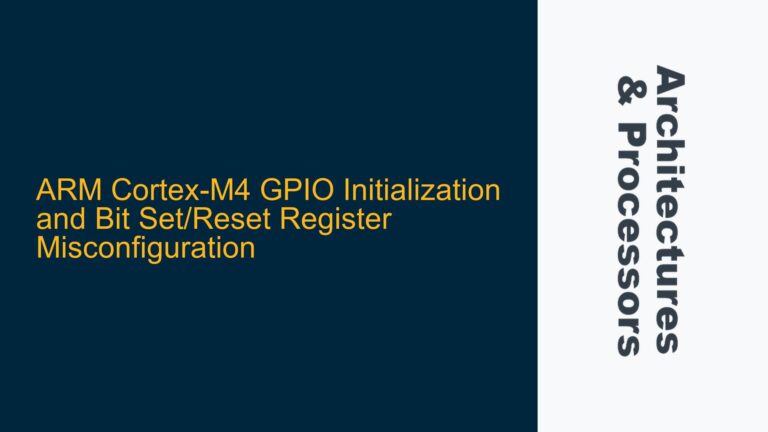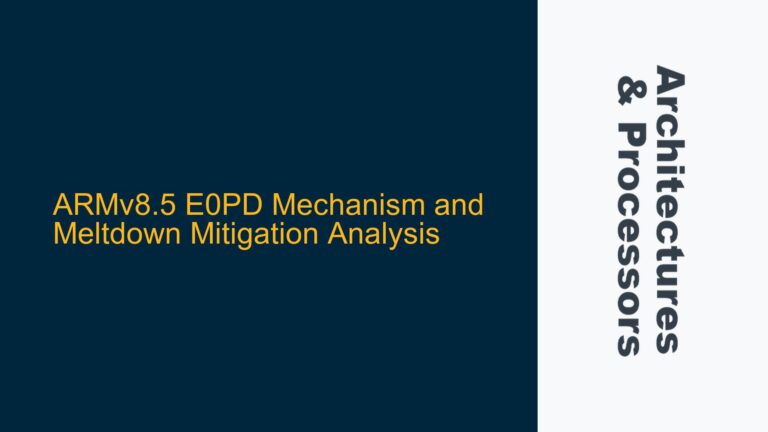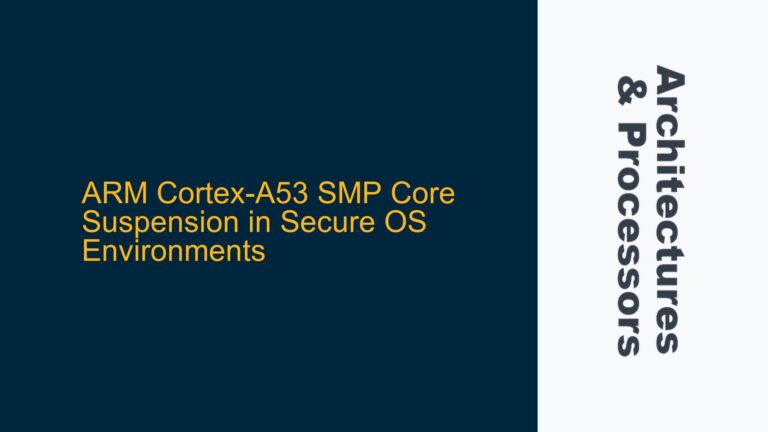Cortex-M4 Pipeline Behavior During Conditional Branches and NOP Insertion
The Cortex-M4 processor, like many modern microprocessors, employs a pipeline architecture to enhance performance by allowing multiple instructions to be processed simultaneously. However, this pipeline can introduce complexities, especially when dealing with conditional branches and the insertion of NOP (No Operation) instructions. The observed behavior in the provided code snippet, where the timing between PIN1 and PIN2 settings changes significantly based on the presence or absence of NOP instructions, is a direct consequence of how the Cortex-M4 pipeline handles these scenarios.
When a conditional branch instruction is encountered, the processor must determine whether the branch will be taken or not. This decision is based on the condition flags set by a previous instruction, such as a CMP (Compare) instruction. If the branch is taken, the pipeline must be flushed and refilled with instructions from the new branch target address. This flushing and refilling process introduces a delay, known as a pipeline stall, which can affect the timing of subsequent instructions.
In the provided code, the conditional branch instruction BNE NCycles_CapDelay2 is preceded by a CMP R3, #0 instruction. If R3 is not zero, the branch is taken, and the pipeline must be refilled with instructions starting from the NCycles_CapDelay2 label. The presence of NOP instructions before the branch target can influence the timing of this refilling process, leading to the observed differences in timing between PIN1 and PIN2 settings.
Impact of NOP Instructions on Pipeline Refilling and Timing
The insertion of NOP instructions before the branch target (NCycles_CapDelay2) can have a significant impact on the pipeline refilling process and the overall timing of the code. NOP instructions are essentially placeholders that do not perform any meaningful operation but still occupy a cycle in the pipeline. When NOP instructions are present, they can help to align the pipeline in a way that minimizes stalls and ensures that subsequent instructions are executed in a more predictable manner.
In the provided code, when NOP instructions are uncommented, the timing between PIN1 and PIN2 settings is reduced to 1 cycle. This suggests that the NOP instructions are effectively aligning the pipeline, allowing the STR instructions to be executed back-to-back with minimal delay. Conversely, when the NOP instructions are commented out, the timing between PIN1 and PIN2 settings increases to 7 cycles. This increase is likely due to the pipeline stall caused by the conditional branch, which is not mitigated by the presence of NOP instructions.
The exact timing difference can be attributed to the way the Cortex-M4 pipeline handles branch prediction and refilling. When a branch is taken, the processor must fetch instructions from the new branch target address, which can take several cycles depending on the pipeline depth and the memory access latency. The presence of NOP instructions can help to mask this latency by providing a buffer of cycles during which the pipeline can refill without affecting the timing of critical instructions.
Optimizing Pipeline Performance with NOP Insertion and Branch Prediction
To optimize the performance of the Cortex-M4 pipeline in scenarios involving conditional branches, it is essential to understand the impact of NOP insertion and branch prediction. The Cortex-M4 processor employs a simple branch prediction mechanism that assumes branches are not taken until proven otherwise. This means that when a conditional branch is encountered, the processor will continue to fetch and execute instructions from the sequential address until the branch condition is resolved.
If the branch is taken, the processor must flush the pipeline and refill it with instructions from the branch target address. This process can introduce a significant delay, especially if the branch target is not aligned with the pipeline or if there are memory access latencies. The insertion of NOP instructions before the branch target can help to mitigate this delay by providing a buffer of cycles during which the pipeline can refill without affecting the timing of critical instructions.
In the provided code, the NOP instructions before the NCycles_CapDelay2 label serve this purpose. When the branch is taken, the NOP instructions allow the pipeline to refill with instructions from the branch target address without introducing additional stalls. This results in a more predictable timing between the STR instructions that set PIN1 and PIN2.
However, when the NOP instructions are commented out, the pipeline must refill immediately after the branch is taken, leading to a longer delay between the STR instructions. This delay is exacerbated by the fact that the Cortex-M4 pipeline is relatively shallow, meaning that any stalls or refilling processes can have a more pronounced impact on timing.
To further optimize the pipeline performance, it is also important to consider the placement of NOP instructions and the overall structure of the code. For example, placing NOP instructions immediately after the branch target can help to ensure that the pipeline is fully refilled before critical instructions are executed. Additionally, minimizing the number of conditional branches and using unconditional branches or other control flow mechanisms can help to reduce the impact of pipeline stalls.
In conclusion, the observed timing differences in the provided code are a direct result of how the Cortex-M4 pipeline handles conditional branches and the insertion of NOP instructions. By understanding the impact of these factors on pipeline performance, developers can optimize their code to achieve more predictable and efficient timing, especially in time-critical applications such as setting and clearing GPIO pins.






